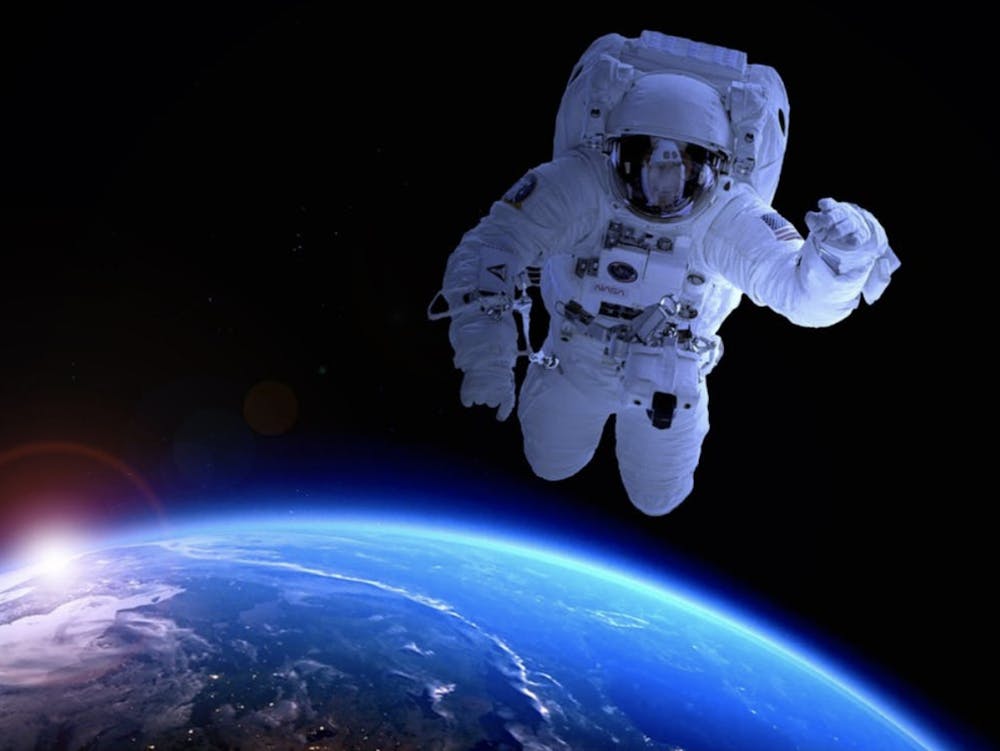After tremendous success as a house course and online learning experience, Space Medicine has become the first student-created, officially published Coursera course to date, with over one thousand learners already registered to blast off.
Dominic Tanzillo and Nicholas Saba, both Trinity ‘21, received positive feedback from students in their original course. The six-week program consisted of pre-recorded video lectures and a number of live components to simulate the interconnectedness of a classroom.
“We would have one live session each week, which would typically be a guest lecturer, but other times a meet and greet or a case study discussion,” Saba explained. “We had students from all over the world, a LinkedIn group created … once it launched, it was pretty hands off.”
“We had feedback from people as young as high schoolers to as experienced as full aerospace physicians,” Tanzillo added. “One graduate student from East India would wake up at 6 a.m. each day to join the live sessions. Another student from the [United Kingdom] would stay up late with a friend to watch and discuss the lectures.”
The published Coursera course retains much of the original program’s structure, including a similar blend of pre-recorded lectures with additional guest components. It is “framed around a real-world medical case study in which learners investigate some of the most anticipated challenges to humans living in space for extended periods of time, as well as weigh potential solutions,” according to team lead Megan Lancaster.
Registered learners will also receive access to a course-specific Discord channel complete with live chat rooms and spaces to ask questions. Saba described the channel as a “stepping stone to greater community,” as it will allow students to work together and discuss the course as they progress.
Evidently, transitioning from a house course to one with official Coursera certification was a team effort.
Tanzillo first spoke with Leonard White, director of undergraduate studies of psychology and neuroscience and creator of Medical Neuroscience, one of the most popular Coursera courses. White pointed Tanzillo towards Duke Learning Innovation, where Lancaster, a senior learning experience designer, would go on to serve as Team Lead in guiding the Space Medicine crew towards publication.
“From January 2021 to July 2021, our Space Medicine project team would meet weekly via Zoom to plan the design of the course,” Lancaster wrote. “[Tanzillo and Saba] have this impressive ability to make complex concepts in science and medicine accessible and entertaining to a wide audience. With each script, our team worked to bring their vision to life through designing animations, graphic, and planning studio and on-location recording sessions.”
According to Lancaster, all resources needed to design this course were provided by Duke Learning Innovation for free. The team, including Lancaster, Saba, Tanzillo, Media Designer Nick Janes, Media Producer Michael Blair and Learning Designer Willie Williamson, each spent around ten hours a week working on the project.
Saba and Tanzillo have high hopes for the future of Space Medicine, and the pair has been in contact with various groups to discuss possible extensions for their course. Sophomore Brandon Francis and junior Eden Deng are leading the house course at Duke this spring, and similar programs may begin to appear at other college campuses.
“The biomedical research division chief at NASA is reviewing the course to see if they can get approval to then be submitted to their internal mailing list,” Tanzillo said. “We also gave the lecture materials to students at [the University of Colorado-Boulder] and [North Carolina State University] so that they can teach the live [house course] version. We want to remove some of the barriers and make learning easy.”
Saba echoed his co-teacher’s final sentiment in that the legacy of their course flies far past space medicine itself; the official Coursera program has opened the door to a new generation of student instructors and a new era of collaboration.
“We are excited to get others excited, and we hope other people will do things like this in space medicine or whatever they are passionate about. We paved the way for students to take what they are interested in into their own hands and show it off.”
Get The Chronicle straight to your inbox
Sign up for our weekly newsletter. Cancel at any time.
Gautam Sirdeshmukh is a Trinity senior and a staff reporter for the news department. He was previously the health & science news editor of The Chronicle's 117th volume.

